| <<prev | back to index | next> |
Sweden 1973 "Explorers"
| Issue Date | 22.09.1973 |
| ID | Michel: 810-814, Scott: 1ß005-1009, Stanley Gibbons: 745-749, Yvert & Tellier: 789-793, Category: Ot. |
| Designer | Svenolov Ehren, Jan Magnusson. Engraver: Czeslav Slania |
| Stamps in set | 4 |
| Value |
1kr - Carl Peter Thunberg (1743-1828) 1kr - Anders Sparrman (1748-1820) 1kr - Adolf Erik Nordenskiöld (1832-1901), Expedition ship "Vega" 1kr - Salomon August Andree (1854-1897) 1kr - Sven Hedin (1865-1952) |
| Type | commemorative |
| Size (width x height) | 44mm x 27mm |
| Layout | Booklet of 5, sheets of 40 |
| Products | FDC x1, Booklet of 5 x1 |
| Paper | |
| Perforation | 12¾ Horizontal |
| Print Technique | Recess |
| Printed by | |
| Quantity | 1.588.200 sets |
| Issuing Authority |
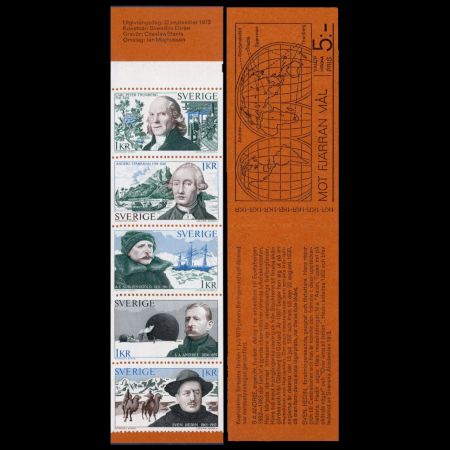
On September 22nd 1973, Postal Authority of Sweden issued the set of 5 stamps "Explorers" - show 5 prominent Swedish explorers. These stamps were engraved by famous Czechoslovakians Engraver Czeslav Slania.
One of these stamps shows a portrait of Dr. Sven Heiden.
Sven Hedin, (February 19, 1865 - November 26, 1952), was Swedish geographer, topographer, explorer, photographer who led through Central Asia a series of expeditions.
His expeditions to Asia resulted in collections of material of the most varied kinds, today housed with a number of museums and institutions primarily, in Sweden, but also in other parts of the world. The collections span a range of materials; ethnographic (in a wide sense) and archaeological objects, botanical and zoological specimens, paleontological and paleobotanical fossils, geological samples, collections of manuscripts, block-prints and books in Central and East Asian languages.
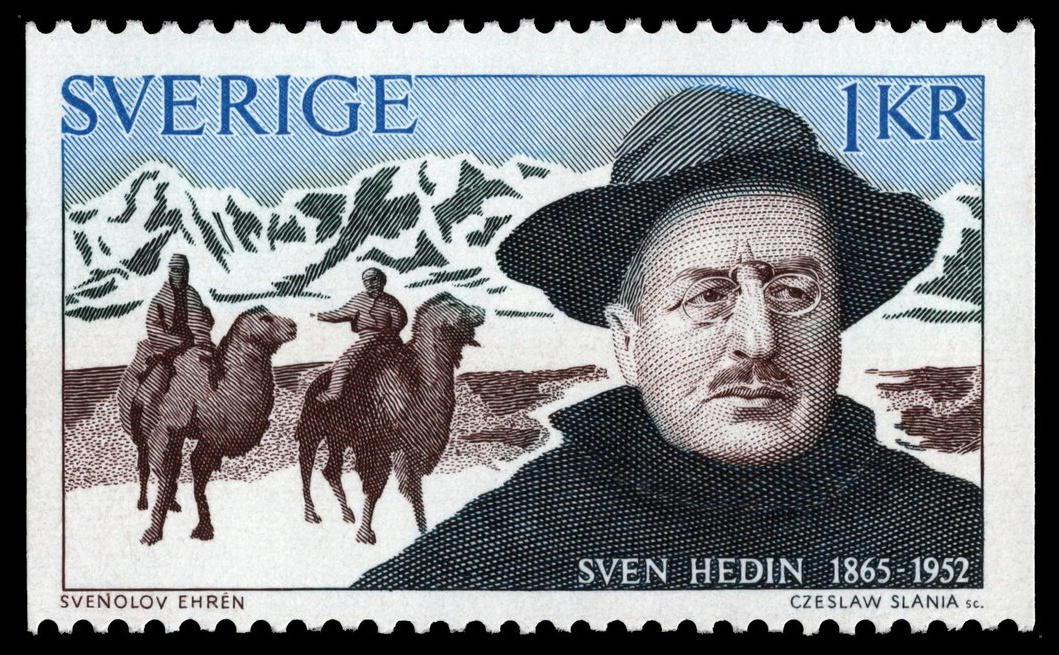 |
| Sven Hedin on stamp of Sweden 1973, MiNr.: 814, Scott: 1009 |
One of the expedition led by Hedin was the Sino-Swedish Expedition, a bilateral Chinese-Swedish expedition, which carried out scientific research in north and northwest China, 1927–1935. The Expedition looked in particular at the meteorology, topography and prehistory in Mongolia, the Gobi Desert and Xinjiang.
The expedition was split by two parts:
- 1927–32 – from Beijing – via Baotou, Mongolia, the Gobi Desert, Xinjiang – to Urumqi
- 1933–34 – from Beijing to Kashgar, with a view to constructing two roads suitable for cars
Among many other discoveries, the expedition found many fossils of prehistoric plants and animals, including dinosaur bones and eggs. According to the agreement with the Chinese authorities some fossils were repatriated in the early 1950s, and allegedly also during the period of the Cultural Revolution, and today at least the early consignments are found in the Museum of Paleontology in Beijing.
Parts of this collection are still found in Sweden today - with many specimens in the collections of the Museum of Natural History, Stockholm.
The following specimens of prehistoric animals were named in honour of Sven Hedin: Tsaidamotherium hedini - a fossil hoofed mammal, Lystrosaurus hedini - a fossil Therapsid (a "mammal-like reptile").
| FDC | Used cover | |
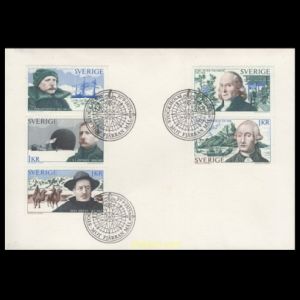 |
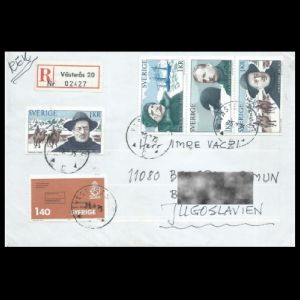 |
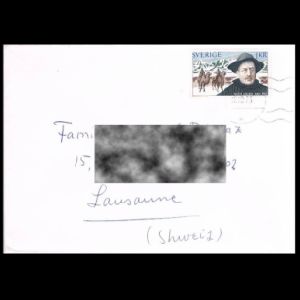 |
References:
- [R1] Technical details and stamps presentation: Linns Stamp News,
- [R2] Sino-Expedition: Wikipedia, Sven Hedin Foundation
- [R3] Sven Hedin: Wikipedia, Encyclopedia Britannica, Sven Hedin Foundation, encyclopedia,
| <<prev | back to index | next> |